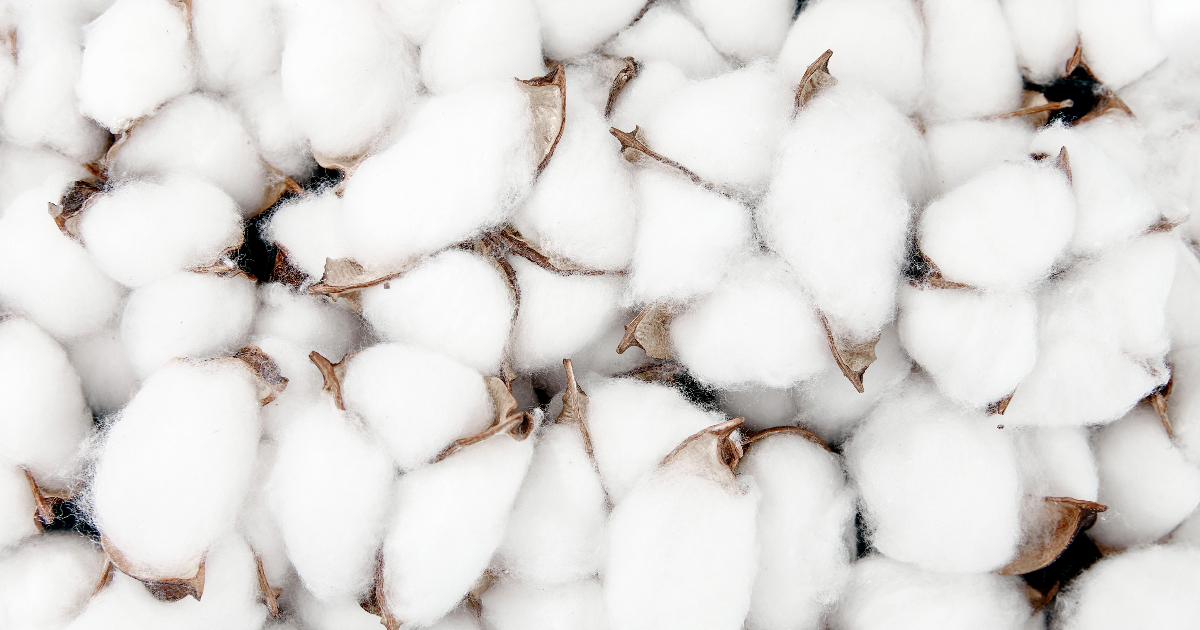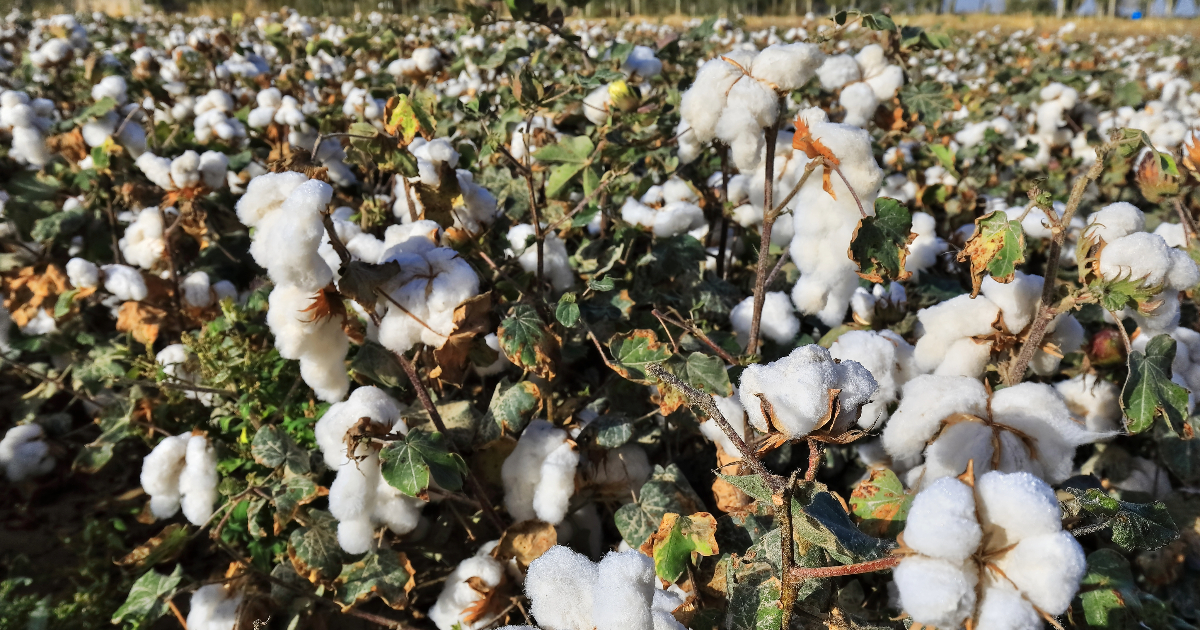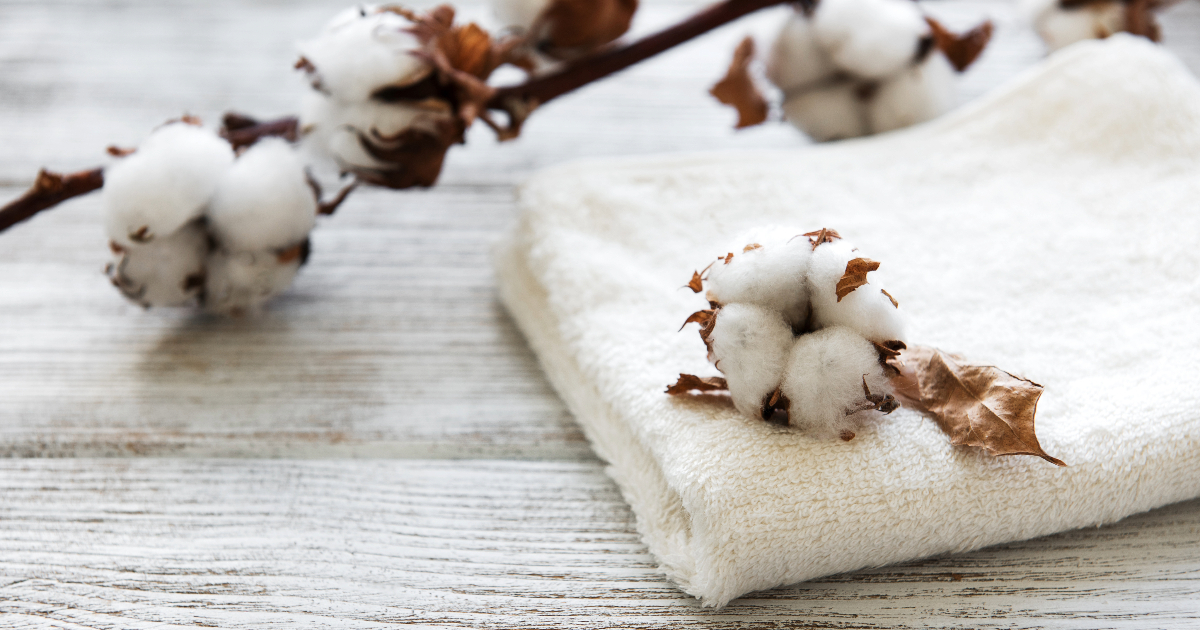Cotton fabric is made from the natural fibers surrounding the seeds of cotton plants, primarily the species Gossypium hirsutum and Gossypium barbadense. Cotton fibers are almost pure cellulose and contain minor amounts of proteins, waxes, and natural impurities.

Cotton fabric is known for being very soft, breathable, and comfortable to wear. It is also quite strong and durable, especially when wet. These characteristics make cotton a versatile fabric used for a wide variety of clothing, bedding, towels, and other textiles.
Origins and History of Cotton Fabric
Cotton has a long history stretching back millennia. The origins of cotton fabric can be traced to four major cradle regions where cotton cultivation first emerged:
- India: Cotton was first used for textiles at the Mehrgarh site dating to 5000 BC. Cotton textiles were also widespread during the Indus Valley civilization from 3300-1300 BC. India drove early developments in cotton textile technology.
- South America: Cotton was grown for textiles as early as 4200 BC along the coast of Peru. Cotton fabrics allowed the growth of major cultures like the Norte Chico and Nazca.
- Arabia and Africa: Cotton was likely domesticated in Arabia by 500 BC. The earliest evidence in Africa dates to around 1000 BC in the Kingdom of Kush.
- China: Cotton cultivation in China began around 200 BC during the Han Dynasty. However, silk was more prized than cotton for much of Chinese history.
Cotton cultivation reached Europe in the Middle Ages between 500-1000 AD, introduced by Arab and Indian traders. Europeans were astounded by the “wool-bearing trees” that produced this textile fiber. The Crusades also exposed more Europeans to cotton and helped stimulate cotton production.
The rise of the transatlantic slave trade fueled the expansion of cotton production across the British Empire. India accounted for 25% of the global textile trade by the early 1700s with its prized fine cotton textiles, especially muslin.
The American South also became a major cotton producer thanks to the labor of enslaved Africans. US cotton production would help drive the Industrial Revolution, with cotton textile manufacturing an early mechanized industry.
Characteristics of Cotton Fabric
Cotton fabric has a unique set of properties that make it so versatile and popular:
- Softness: The fibers are smooth, fluffy, and pliable, creating fabrics with a soft hand feel.
- Comfort: Cotton is highly breathable and helps absorb sweat. Garments like T-shirts are cool and airy.
- Strength: Cotton fibers are very strong, especially when wet, making cotton fabrics quite durable.
- Absorbency: The fibers readily absorb moisture, with good wicking ability. This makes cotton ideal for towels.
- Coloration: Cotton takes dye very well, allowing for a wide spectrum of colors.
- Affordability: As one of the cheapest fabrics, cotton is accessible to consumers worldwide.
These favorable characteristics help explain why cotton accounts for nearly half of global fiber use and around 75% of all clothing contains at least some cotton.
Types of Cotton Plants

There are four main species of cotton plants used for fabric:
- Gossypium hirsutum: Accounts for over 90% of cotton production. Native to Central America and the Caribbean. Grows well in diverse climates. Also known as upland cotton.
- Gossypium barbadense: Known as extra-long staple (ELS) cotton with longer, softer fibers, like Pima cotton. Accounts for about 8% of production. Native to South America.
- Gossypium arboreum: Grows as a tree cotton in India and Pakistan. Less than 2% of cotton production.
- Gossypium herbaceum: Also called Levant cotton. Less than 2% of production and found in Africa and Arabia.
Cotton fibers vary in length, with longer fibers spinning into finer, softer fabrics. Gossypium hirsutum produces short-to-medium staple fibers about 1-1.5 inches long. Gossypium barbadense has extra-long fibers exceeding 1.5 inches, while tree cotton can reach 2 inches long. Longer cotton fibers result in more premium textiles.
Cotton Fabric Production
Producing cotton fabric is a multi-step process:
- Cotton is planted and harvested either by hand or machine. It grows well in warm, sunny regions with steady moisture.
- The cotton fibers are separated from the seeds using a cotton gin machine. This produces the raw cotton fibers.
- The ginned cotton is carded into long strands that are free of debris. Carding removes shorter fibers and aligns the longer ones.
- Strands are continuously drawn into thinner rovings. The rovings are finally spun into yarn on a spinning machine. Spinning twists the fibers together for strength.
- The cotton yarns are woven on a mechanical loom into the final fabric product like denim or muslin. The intersections of longitudinal and lateral yarns create the woven fabric.
- The fabric may be dyed, printed, or finished with special coatings. For example, mercerizing cotton fabric adds luster.
Advances in mechanized textile mills drove the exponential growth of cotton fabric production during the Industrial Revolution. Today, high-speed automated processes allow massive volumes of cotton fabric to be manufactured.
Major Uses of Cotton Fabrics

Cotton is made into a diverse array of fabrics that end up in many different products:
- Apparel: Cotton is ideal for most clothing like shirts, pants, dresses, underwear, and socks. It provides comfort and easy movement.
- Home furnishings: Cotton is used to make bed sheets, quilts, curtains, tablecloths, and soft furnishings. Its absorbency makes it great for towels.
- Industrial fabrics: Cotton is manufactured into canvas, denim, and specialty fabrics used for tarps, tents, etc. The fibers have high tensile strength.
- Medical uses: Gauze, swabs, surgical gowns, and other medical items rely on the purity and absorbency of cotton.
- Paper: Cotton can be processed into a pulp used along with wood to make paper products, like banknotes, archival paper, and books.
- Other uses: Fishnets, coffee filters, typewriter ribbons, and cosmetic pads all use cotton. The seeds produce cottonseed oil.
This huge diversity of end uses for cotton fabrics and products reflects cotton’s versatility as a natural fiber.
Major Cotton Producing Countries
Cotton thrives in the warm climates found between the Tropics of Capricorn and Cancer. The top cotton producing nations today include:
- India: The #1 producer globally, accounting for over 20% of output. Cotton is vital to India’s textile industry.
- China: The #2 producer and also the #1 consumer of cotton thanks to China’s massive apparel manufacturing sector.
- United States: Once the largest cotton producer, now ranks #3 behind China. The major growing region is the South Plains.
- Pakistan and Brazil: Round out the top 5 producing over 3 million tonnes annually. Cotton is essential to their economies.
- West African nations like Benin, Mali, and Burkina Faso are key cotton producers feeding European textile demand.
High cotton productivity relies on mechanization, irrigation in dry regions, and the use of pesticides and fertilizers. Organic cotton is a small but growing part of production.
The Environmental Impact of Cotton
Conventional cotton is often considered one of the world’s dirtier crops due to heavy pesticide and water use. However, cotton’s environmental impact depends heavily on production methods.
- Conventional cotton uses more insecticides than any other crop. This takes a toxic toll on the environment and farmworkers. Fertilizer use pollutes waterways.
- Cotton cultivation expanded into arid regions like Uzbekistan, depleting the Aral Sea. Soil salination is now widespread.
- Smallholder cotton farmers in developing countries often struggle with debt and poverty.
- However, organic cotton farming practices avoid synthetic pesticides and fertilizers. Organic cotton is more sustainable but accounts for less than 1% of global output.
- Better regulation, innovative growing practices, and new cotton varieties can reduce the environmental footprint of cotton fabric production.
Overall, cotton ranks behind synthetic fibers like polyester in terms of sustainability. But organic cotton and better cotton farming practices offer promise for much greener cotton textile production.
FAQs
Why has cotton been so widely used throughout history?
Cotton has been prized across civilizations for its softness, breathability, and absorbency. Cotton fabric keeps wearers cool in hot climates and its durability makes clothing last longer. Cotton fibers also lend themselves to textile manufacturing innovations like the spinning jenny. These favorable characteristics made cotton the backbone of the global textile trade by the 1700s.
How is cotton harvested and processed into fabric?
Cotton farming relies heavily on mechanization today. After planting, specialized machines harvest the ripe cotton bolls. At cotton gins, seeds are separated from the fibers. After the raw cotton is carded and spun into yarn, it is woven or knitted on industrial looms into fabric. Cotton may also be dyed, printed, or given special finishes.
What types of products contain cotton fabric?
The vast majority of clothing contains at least some cotton. Towels, sheets, and other home textiles also depend on cotton. Denim and canvas showcase cotton’s strength in industrial fabrics. Gauze bandages and medical supplies utilize cotton’s purity. Even dollar bills have cotton! This diverse range speaks to cotton’s versatility.
How can cotton be made more sustainable?
Conventional cotton farming carries environmental burdens from heavy pesticide and water use. However techniques like drip irrigation, integrated pest management, and better land use practices can reduce impacts. Organic cotton farming avoids synthetic chemicals completely. Cotton fabric processing can also be made greener by using renewable energy, recycling water, and preventing pollution.
Why are some cotton fibers longer than others?
Upland cotton varieties have short fibers around 1-1.5 inches long. Extra-long staple cotton like Egyptian or Pima cotton has fibers exceeding 1.5 inches. Tree cotton fibers can reach 2 inches long. Longer fiber cotton produces finer, softer fabrics. However, longer cotton is lower yielding and more difficult to grow, so short and medium cotton dominate production.
Conclusion
For millennia, cotton fabric has been prized for its signature softness, breathability, and durability.
Cotton cultivated across the tropics and subtropics now clothes people worldwide as the most popular natural fiber.
Ongoing advances in cotton breeding and responsible farming practices can help ensure cotton maintains its coveted status in textiles for generations to come.





